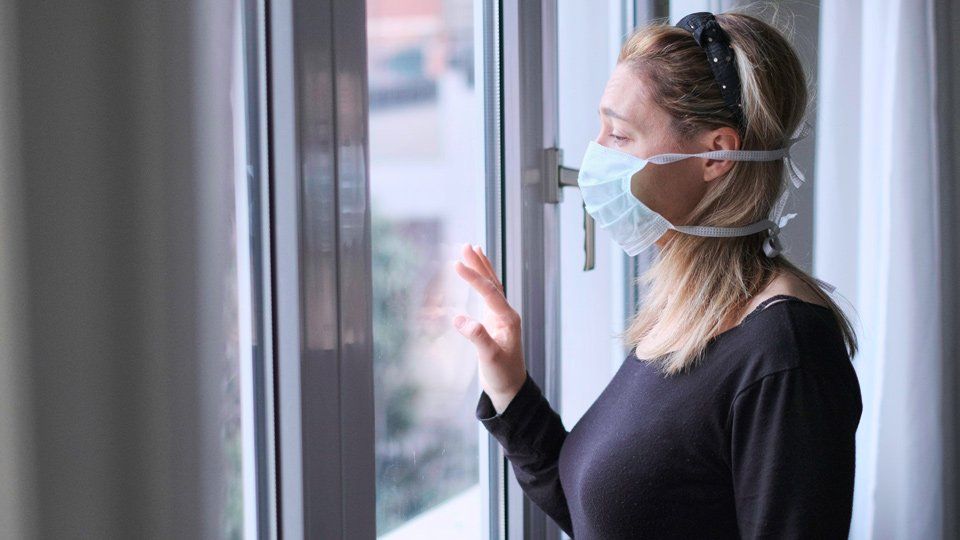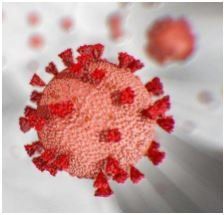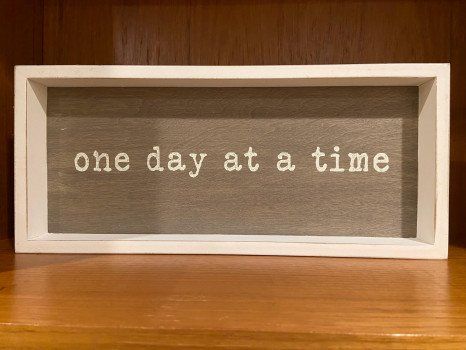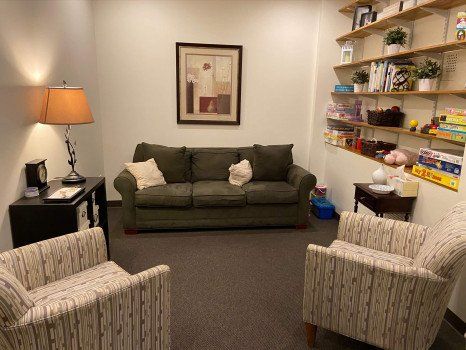Burnout and Self-Care
Pre-Test
Before we begin, think about these questions in regards to self-care:
- What is one thing you do in the morning for self-care?
- What is one thing you do after work/school for self-care?
- What is one thing you want to do for self-care, but you never get around to it?
Where are we in the year?
For most students, the long Winter Break just ended, and we are transitioning back to a typical school schedule. Some parents were able to join their children with an extended break over the holidays, and are also transitioning back to a work schedule. Others have continued to work through the holidays and never actually received a significant holiday break.
It can be extremely difficult and exhausting meeting our academic and work needs without engaging in self-care. Without self-care, we may experience the phenomena known as “burnout.”
Burnout
Burnout describes what happens when a student or professional becomes increasingly “inoperative.” In other words, burnout commonly is described as emotional exhaustion, depersonalization, and reduced performance. It can take many forms; rigidity, irritability, feeling helpless, or quickness to anger. As burnout worsens, its affects can take a more serious turn; paranoia, self-medication, or being closed off to all feedback.
We may not pay full attention to the reality of burnout until suddenly everything seems overwhelming. We may lack the knowledge of what is transpiring to assess our experience objectively that would enable us to take proper measures to restore balance to our lives.
It is important to address this complicated exhaustion before the feeling of depletion leads to dysfunction and beyond.
What’s the answer?
Self-care!
Self-care can be defined as the balancing activities in which people can engage to preserve personal longevity and happiness in their relationships, and their careers. By engaging in self-care, we can assert our right to be well and reintroduce our own needs into the question. It’s common to feel guilty about needing to take care of ourselves, but it’s also the healthy and healing choice in order to take care of others when we need to.
Keep in mind, no single technique will relieve all of your stress. However, by paying attention to our physical and emotional self, we will increase our ability to effectively manage stress as well as our resilience, or our ability to “bounce back.”
Activities of self-care span a wide range and can include:
- Start the day with a relaxing ritual. Instead of jumping out of bed as soon as you wake up, spend at least 15 minutes reading something that inspires you, writing or drawing in a journal, stretching, or meditating
- Adopt healthy eating, exercising, and sleeping habits. Eating right, regular physical activity, and getting plenty of rest can lead to the energy and resilience needed in order to deal with life’s hassles and demands
- Be creative! Participate in personal endeavors that are non-school or professional activities. Creativity is a powerful defense against burnout. Try something new, start a fun project, or resume a favorite hobby.
- Ask for support from mentors or a peer group. Explore how other people find their balance wellness between their academic or professional life. You have a lot more control of stress than you may think. Learning how to manage stress can help regain your balance.
- Set boundaries. Learn how to say “no” to requests on your time and don’t overextend yourself. This can be difficult, but just remember that saying “no” allows you to say ‘yes” to other things that you truly want to do.
- Take a break from technology. Set a time each day when you completely disconnect from all screens and technology. Put away your phone, laptop, and stop checking your emails.
- Take time for self-reflection. Identify what’s important in your life and live in a way that reflects it.
- Prevention can also be extremely helpful for stress and burnout. For example, identifying natural self-care strengths already present in your life and learning how to apply these and additional strategies more consistently can help you grow, develop, and survive school or your career.
Overall
Our lives may never be stress free, but there is so much you can do to make sure you are appropriately engaging in self-care in order to improve your well-being, while helping alleviate work/school related stress that can lead to burnout.
Remember those self-care questions at the beginning of this article? After reading more about burnout and self-care, do you have some new ideas? I hope so!
Dr. Adam Share is on the staff of Athans and Associates. He supports his clients through discovering personal strengths to build confidence, and engages clients in the therapeutic process through play and support therapies. Interventions may include cognitive-behavioral therapies, non-directive play therapy, music, art, and mindfulness-based therapy approaches. Dr. Share utilizes a systems approach incorporating all aspects of the individual’s environment into the therapeutic process.
Adam Share, Psy.D.
Athans and Associates
Behavioral Health Care
32 Main Street, Park Ridge, IL

Photo via Pexels In today’s fast-paced world, stress can often feel like an unavoidable companion. However, with the right strategies, it’s possible to cultivate a life that prioritizes mental well-being and balance. Whether it’s through career adjustments, effective time management, or embracing relaxation techniques, there are numerous ways to mitigate stress. In this article, we’ll go over several things you can do to minimize stress and feel better each day.

The Covid-19 virus is dated 2019 but came to us in a big way by February,2020 and continues to have a major impact in our lives. We have learned some things about the virus since then, but more so about how it has impacted us. The required social isolation/distancing has affected our lives to a great extent, changing our work, school, and social time a great deal. Adults have been required to work from home in order to avoid physical contact with others. This means eight to ten hours per day on the computer using videoconferencing software to be in contact with staff, clients, etc. Students, too, struggle with no contact outside the home, video conferencing all day long, sometimes with structure and direction, sometimes wondering about somewhat aimlessly on the computer if there is less guidance. Parents often complain that they don’t have the time to supervise their kids on the computer, as they are concerned about doing their job. This is especially true at a time when some jobs are expendable due to a change in the economy created by…Covid -19. Socialization is important to all us: adults, adolescents, children, toddlers, even animals! Have you noticed how your cat or dog shows you how they missed you when you were at work and returned home? Science tells us that socialization was even evident with the caveman. Research shows that being social is an important part of our mental health. This is because talking, sharing thoughts and feelings allows us to “vent,” but also reminds us that we are not alone in solving those problems. Additionally, empathy given, and empathy received goes a long way. “I know how you feel” can be uplifting. Participating, observing one’s smile, laughing together reminds us that we are not alone. Socialization adds to our happiness and well-being. Developmentally, children learn to trust at a young age. Sharing thoughts, feelings, toys, etc. means reaching out to others. They may get hurt emotionally, but then they learn more about relationships and eventually take more risks. Children learn and experience their family first-hand. Getting close, trusting, taking care of, etc. is all part of the process. So, the family is important socially, but our current-day society goes way beyond that. In recent times we spend more time out of the home than in the home (short of sleep time). Social distancing and social isolation have immense personal consequences leading to symptoms of anxiety, stress, fear, sadness, depression and even helplessness and possible suicide. When experiencing these symptoms, we often eat too much and irresponsibly, become lax in physical activity, at times, over-indulge in alcohol, drugs, etc., resulting in even more pronounced symptoms over time. The damage to our bodies and minds is incalculable. While you may have heard of some of these recommendations, do not overlook them. It is not so much all or nothing, rather work toward healthy lifestyles. The support of your partner and family working together will make it much more effective and pleasing to all.

It’s natural that we become anxious and worried as we are clustered in our homes with the current “stay at home” government order. Worry and rumination are not uncommon, naturally wondering: Will we be ok? What about relatives, friends, neighbors who we can’t physically see so easily? There is a real sense of loss of control. It is not uncommon for our sleep, appetite, and mood to be affected. There may be increased use of alcohol, tobacco or other drugs. Sometimes existing health problems are exacerbated. We may feel pre-occupied, “spacey,” etc.
Most parents are familiar with the struggle of setting limits on the amount of screen time their children have each day. With so many gadgets – computers, TVs, smart phones, tablets, video game systems – children have a cornucopia of devices to choose from. Technology does have its merits and benefits. Smartboards are in many classrooms and a large amount of homework requires the use of a computer. Although unlimited screen time may keep your children quiet, too much screen time is not good for kids. Several research studies have shown that too much screen time can have a detrimental effect on a child’s health – both mental and physical. Too much screen time can make it difficult for children to fall asleep at night. An overabundance of screen time can increase a child’s risk of attention problems, anxiety, and depression. Time spent on a screen is time not spent being active, raising a child’s risk of gaining too much weight. TV commercials and other screen ads can lead to unhealthy food choices. Food ads that are aimed at kids are often high in sugar, salt, or fats. Additionally, children tend to eat more when they are watching TV. So how much screen time is too much? The American Academy of Pediatrics has issued guidelines to help parents determine appropriate limits. Children under the age of two should have no screen time. For children over the age of two, limit screen time to two hours per day. Despite what ads may say, videos aimed towards young children do not improve their development. However, most parents know that setting limits on the amount of television your child watches or how much time your teen spends playing video games is easier said than done! Here are some tips to help you limit screen time to a healthy, reasonable amount.
If the idea of a family vacation evokes mental images of a frazzled Clark Griswold, you’re not alone. Our daily routines feel safe and predictable and it’s not always easy to step away, especially when kids are involved. Nevertheless, these adventures provide valuable opportunities for families to practice compromise, adaptation, problem-solving, frustration tolerance, and of course, communication. What’s more, the benefits often outlast the actual experience. A successful family vacation has the potential to enrich a family’s identity and provide “happiness anchors” – a set of soothing memories to mentally recall when we are stressed or anxious. Keep in mind, a “successful” family vacation is not guaranteed and like most adventures, a little planning goes a long way. What follows are helpful tips to make the most of your time away:
Holiday times remind us of special significance and meaning. For many this can be a joyful time, for others, this can be a time of great stress. Read more in our blog...
September is National Suicide Prevention and Awareness Month. Read this blog to learn more about the warning signs, statistics, and prevention.
Parents go back to school, like their children. Parents have to reorganize the house, buy school supplies, buy clothes and uniforms for the kids, buy sport equipment, reorganize schedules, make doctor’s appointments, etc. Parents have to arrange carpools, take kids to sports practices, games, tutors, homework, bedtimes. Parents have their own jobs, the house, as well as the children to manage. This can be overwhelming and stressful. And we tend to take care of everyone else first. We encourage you to take care of yourselves . Find work-life balance. Eat healthy foods. Pet the dog. Get enough sleep, Walk for a few minutes outside. Plan for child care. Read. Listen to music. Pray. Practice deep-breathing. Hug your spouse. The healthier and happier you are…the better your family. Dr. Lynda Behrendt Licensed Clinical Psychologist Athans and Associates 32 Main Street, Park Ridge, IL 60068 www.athansandassociates.net (847) 823-4444
It’s summer and…I’M BORED!!! This is an all too familiar complaint for many parents. Summer is supposed to be laid-back, less stressful, and full of positive feelings, right? However, the transition from a structured schedule to the unstructured days of summer often can be challenging. This is especially true for children with anxiety, ADHD and autism spectrum disorders. Summer also tends to have a focus on being more social and this can lead to feelings of isolation for some children who struggle with depression or social challenges. Here are some tips to be mindful of during the summer months:
Developing a plan on responding to negative behaviors in children. This post discusses the tools used to do so.













